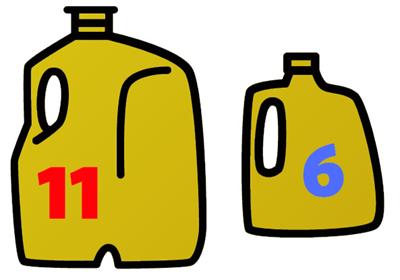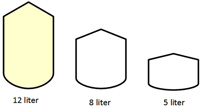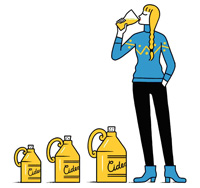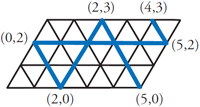 Here is another classic example of the three jug problem posed in the Mathigon Puzzle Calendars for 2017.
Here is another classic example of the three jug problem posed in the Mathigon Puzzle Calendars for 2017.
“How can I measure exactly 8 liters of water, using just one 11 liter and one 6 liter bucket?”
It is assumed you have unlimited access to water (the “third jug” of at least 17 liters). You can only fill or empty the jugs, unless in poring from one jug to another you fill the receiving jug before emptying the poring jug. (Hint: see the Three Jugs Problem.)
See Two More Jugs.

 I was sifting back through some problems posed by Presh Talwalkar on his website
I was sifting back through some problems posed by Presh Talwalkar on his website  This is another problem from the defunct Wall Street Journal Varsity Math Week column.
This is another problem from the defunct Wall Street Journal Varsity Math Week column. Years ago (1967) I read about an interesting solution to the three jugs problem in a book by Nathan Court which involved the idea of a billiard ball traversing a skew billiard table with distributions of the water between the jugs listed along the edges of the table. The ball bounced between solutions until it ended on the desired value. I thought it was very clever, but I really did not understand why it worked. Later I figured out an explanation, which I present here. See the
Years ago (1967) I read about an interesting solution to the three jugs problem in a book by Nathan Court which involved the idea of a billiard ball traversing a skew billiard table with distributions of the water between the jugs listed along the edges of the table. The ball bounced between solutions until it ended on the desired value. I thought it was very clever, but I really did not understand why it worked. Later I figured out an explanation, which I present here. See the